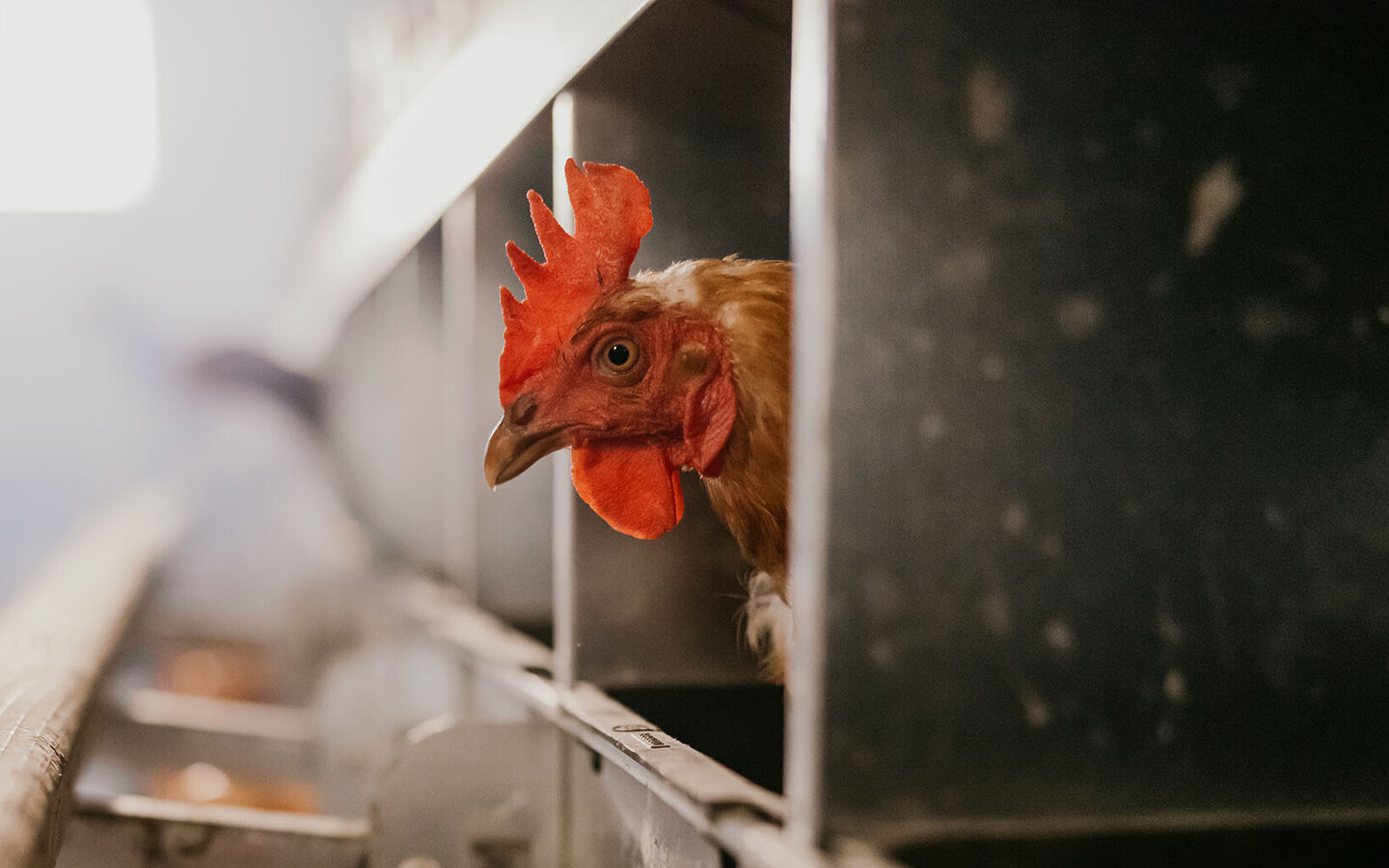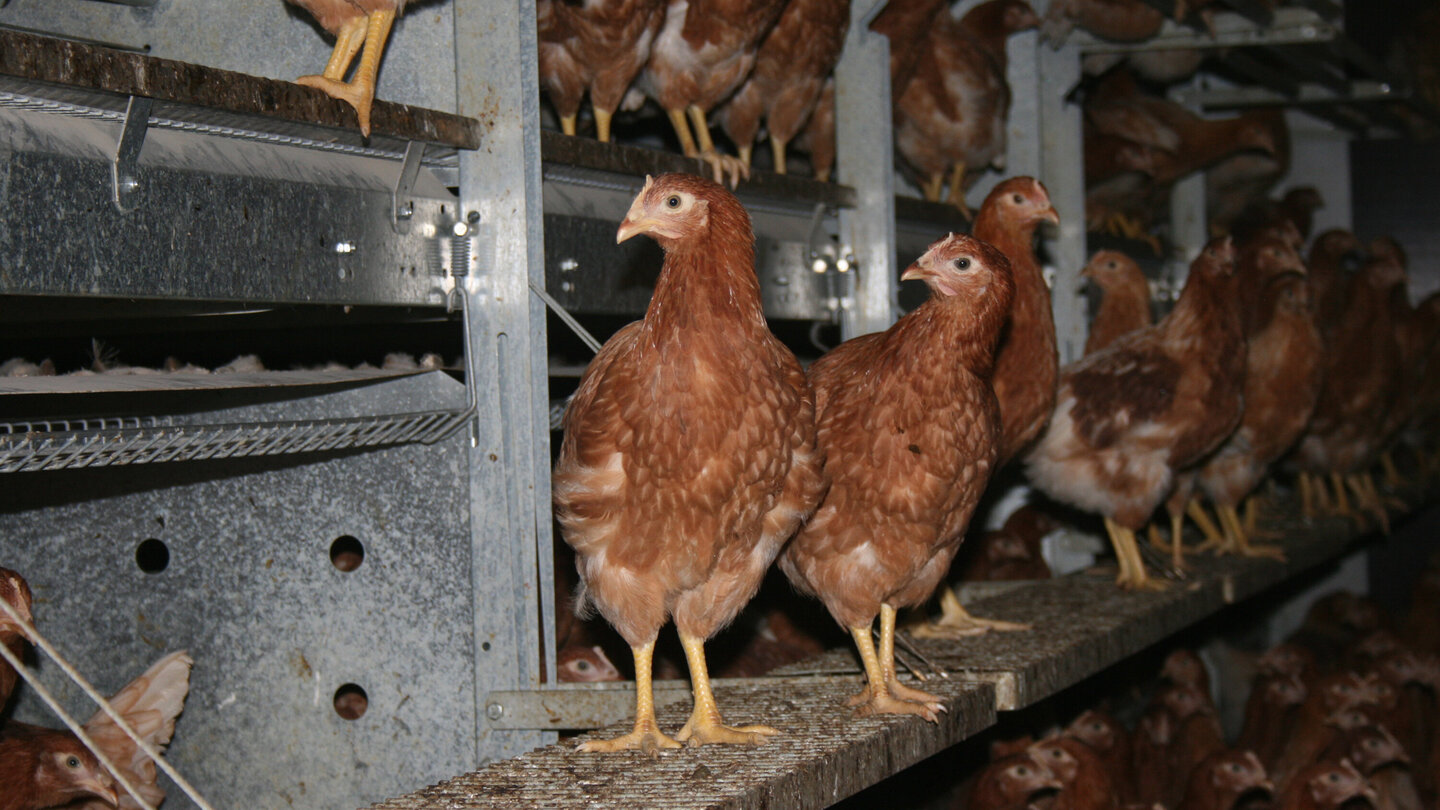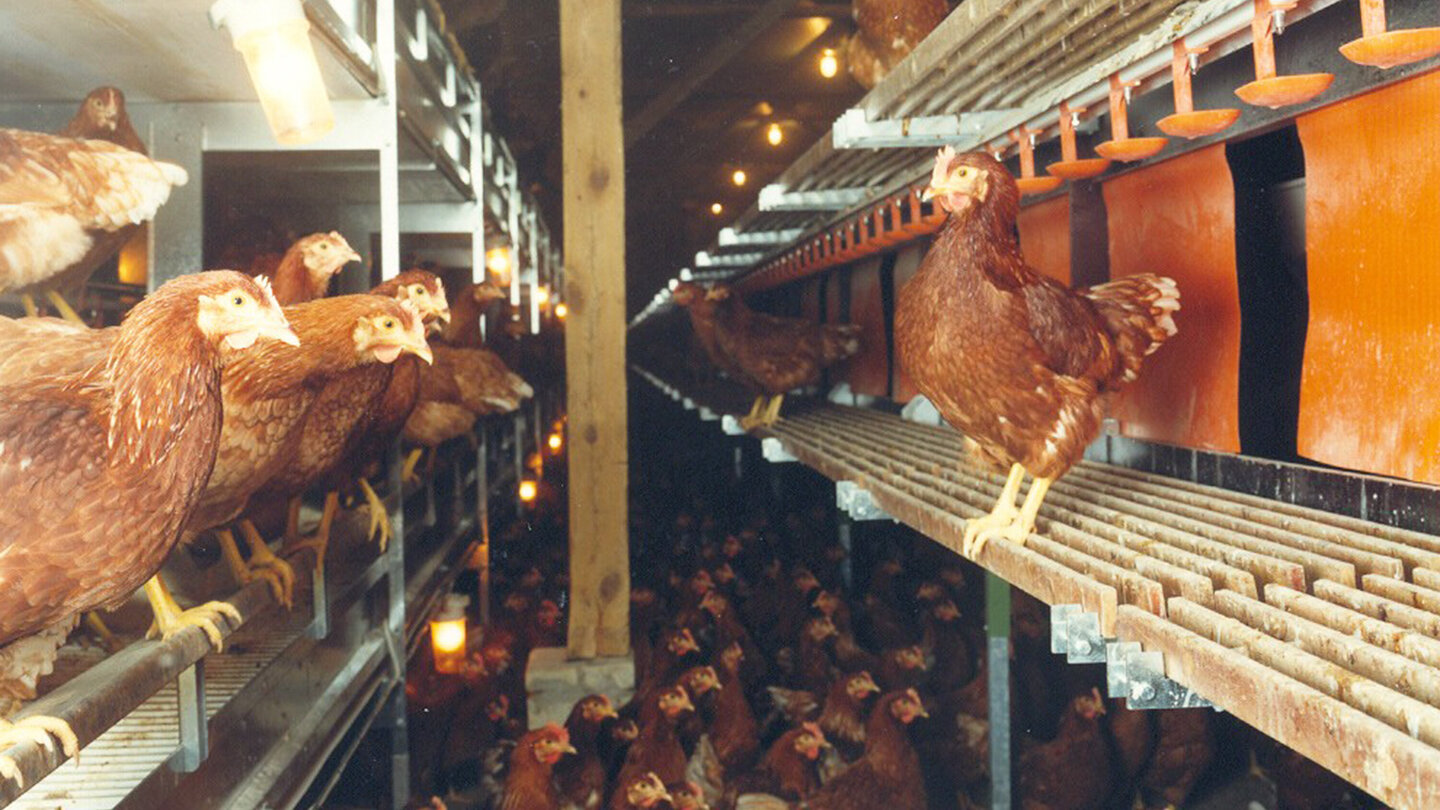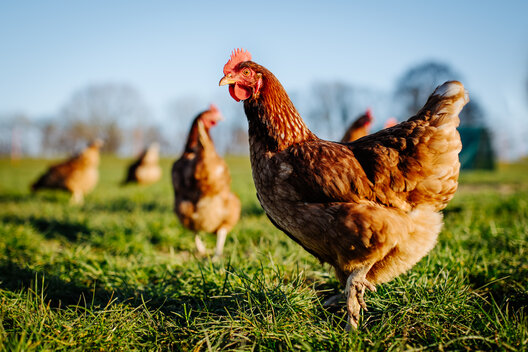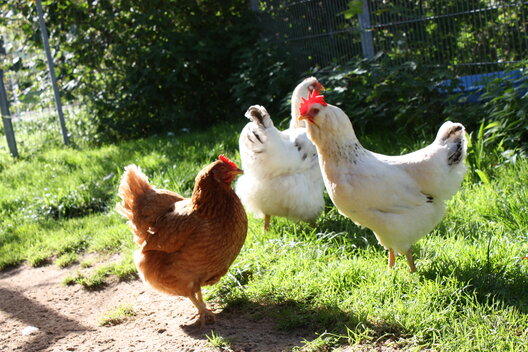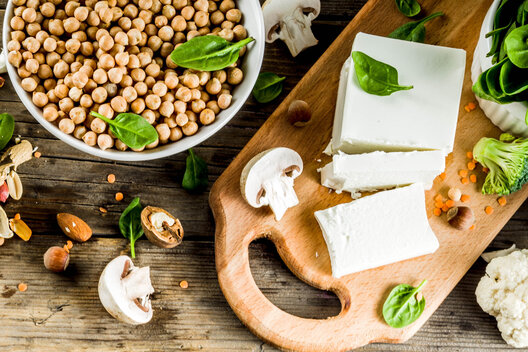Free-range farming
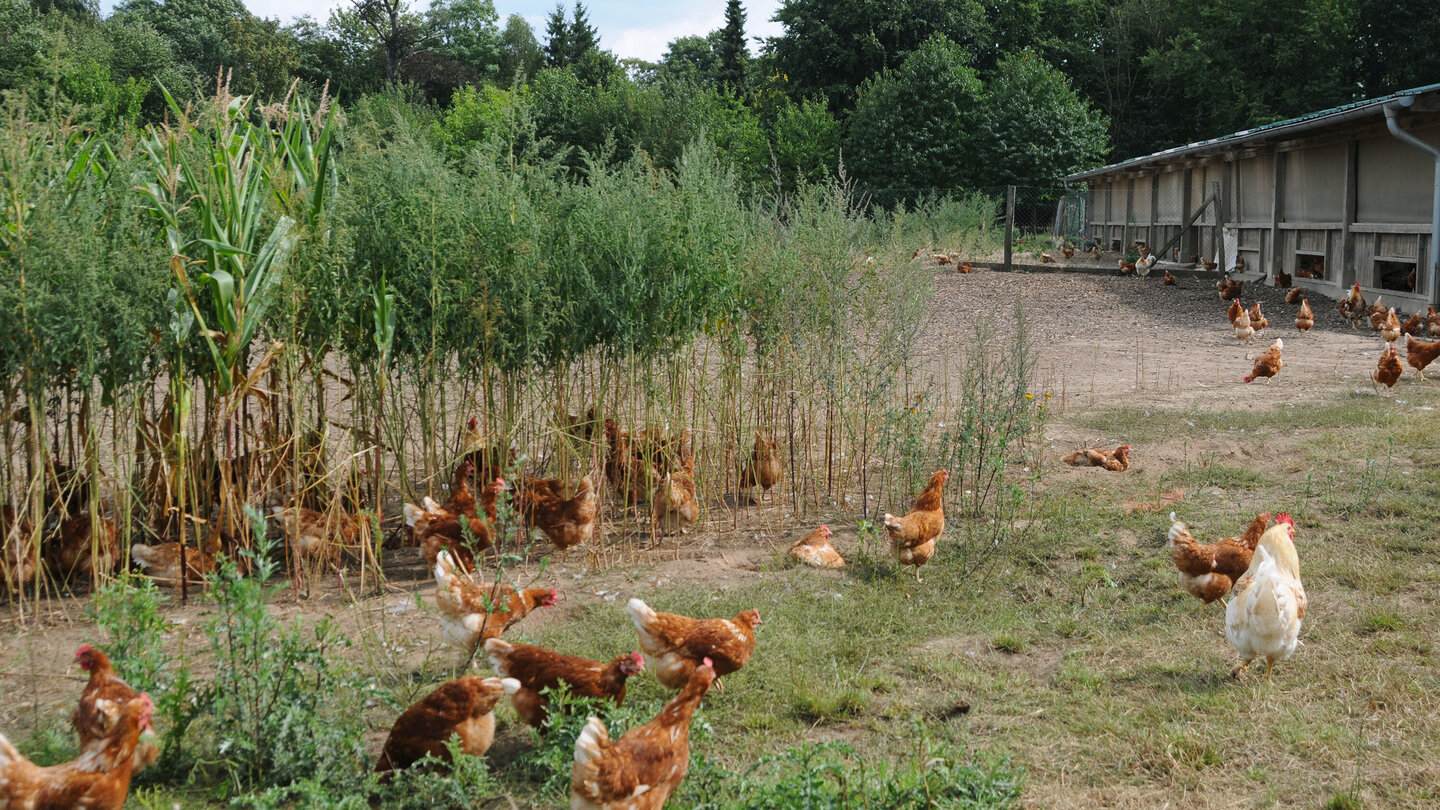
Free-range farming is comparatively the most animal-friendly form of farming for laying hens that comes closest to nature. The animals can move from the barn to a run of at least four square meters per laying hen. In this housing system, the hens can most easily satisfy their need to scratch, bathe in the sand, peck and run. The barn is equipped in the same way as for floor housing.
Organic or biological laying hen husbandry
As with free-range systems, each laying hen has access to an outdoor run of four square meters. The group size is generally limited to 3000 animals. A maximum of six laying hens per square meter may be kept in the barn. The animals must be fed 80 percent organically grown feed. Organic chicken farming thus combines animal welfare and consumer protection aspects.
Floor rearing
Basically, this is pure stall housing, in which at least one third of the floor must be littered with straw, sand or peat. The rest consists of slats or grids. Nine animals share one square meter of floor. Because the animals cannot go outside, this housing system is less animal-friendly than free-range systems. A variant of floor housing is keeping hens in an aviary, in which perches, watering and feeding facilities are installed on several levels so that the laying hens can move freely between the levels and use almost the entire barn space. This allows a higher stocking density of up to 18 animals per square meter of floor space. Aviary housing is the predominant housing system in Switzerland, where cage housing has been banned since 1991.
Cage farming
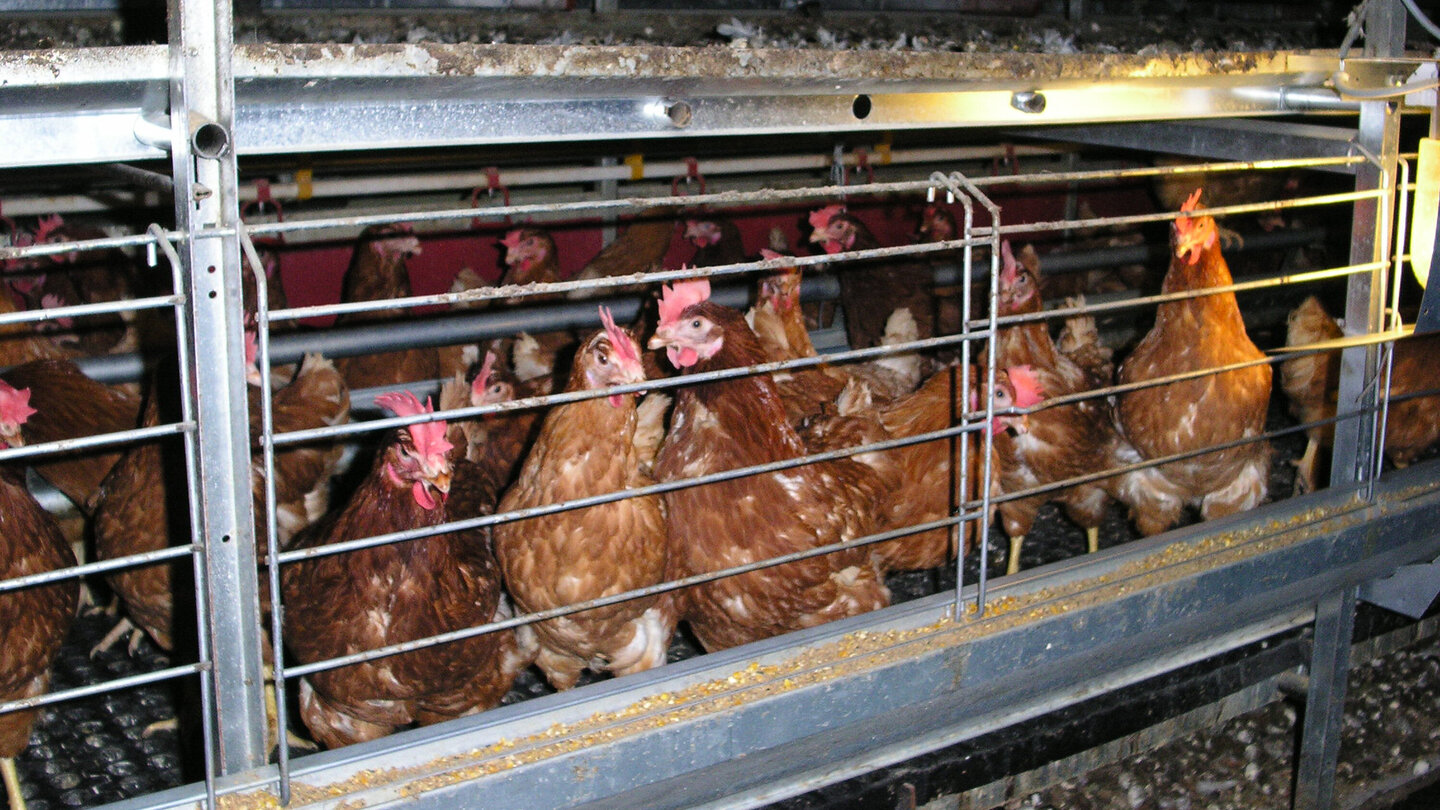
In the previous cage system, four or five hens were crammed together on sloping wire mesh. One laying hen was allowed less than the area of an A4 page. This cage system was permitted until the end of 2009, with an exemption until the beginning of 2010.
However, laying hens may now be kept in a different type of cage. This type of cage is euphemistically referred to as small group housing, but is not fundamentally different from conventional cages. The new small group cages offer the individual hen only slightly more space: instead of the previous 550 square centimetres, there are now 800 square centimetres (890 square centimetres including nest area) - equivalent to just over one and a half A4 pages.
The small group cages are equipped with perches, a nest and a place for sand bathing and scratching. However, the animals are unable to use these facilities due to the lack of space. This results in the same problems as in previous cage housing - the hens suffer from stress, behavioral disorders and injuries.

